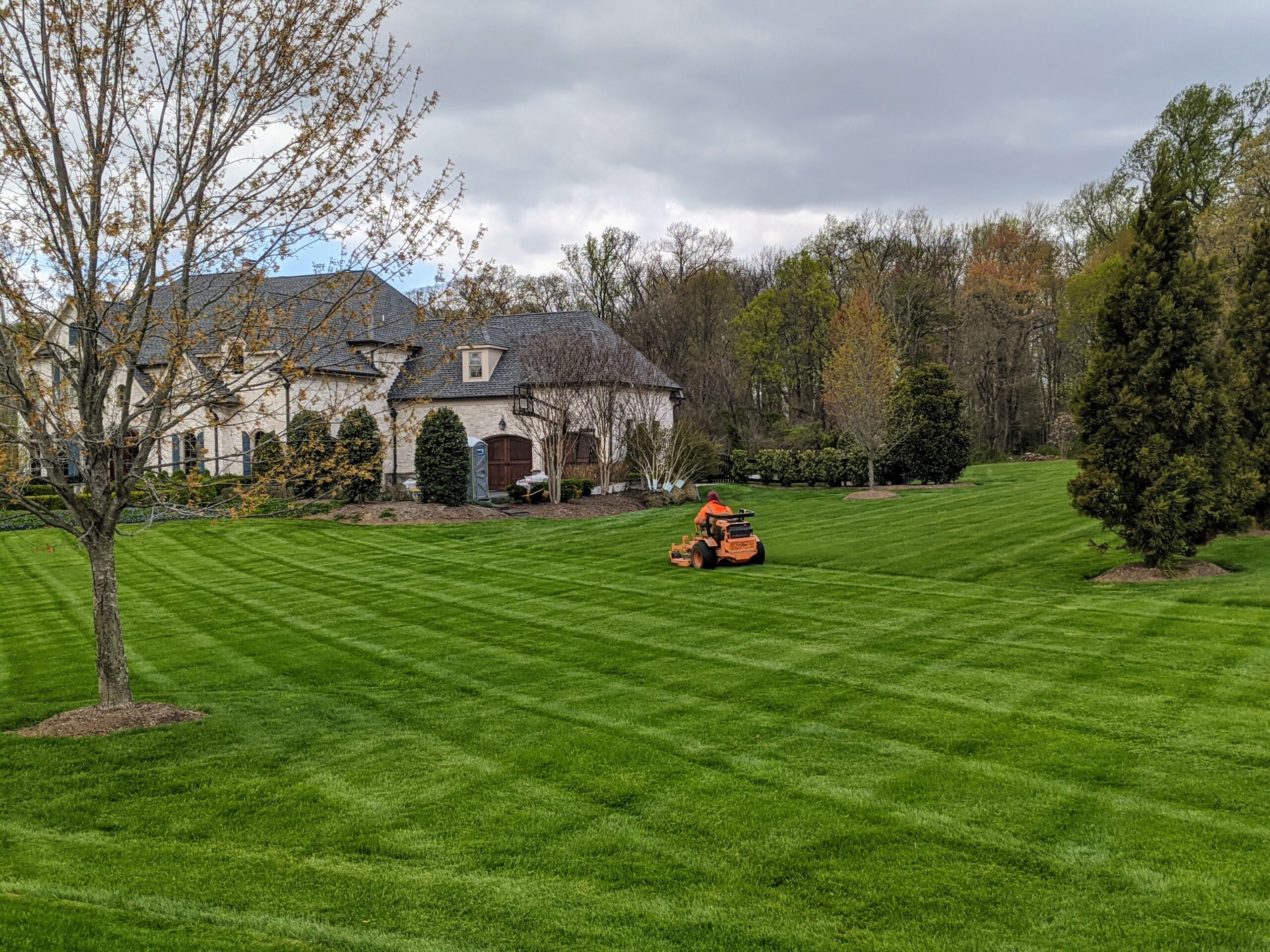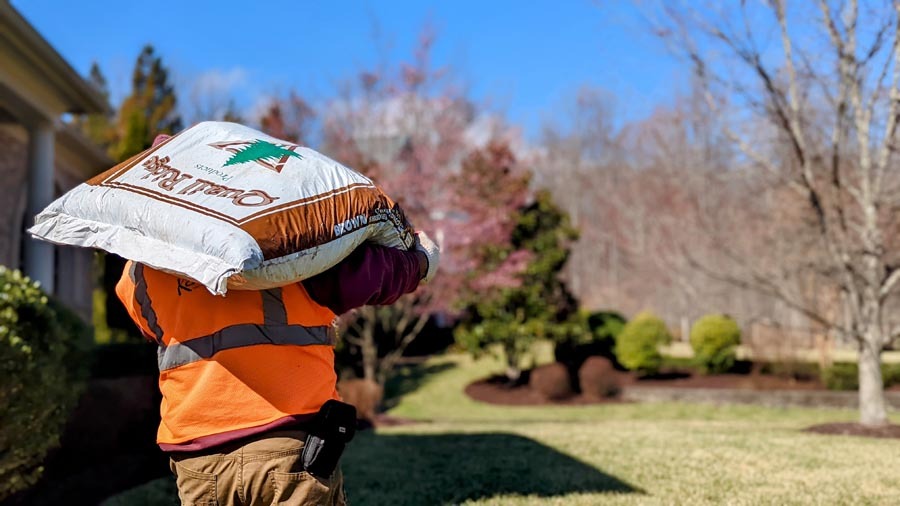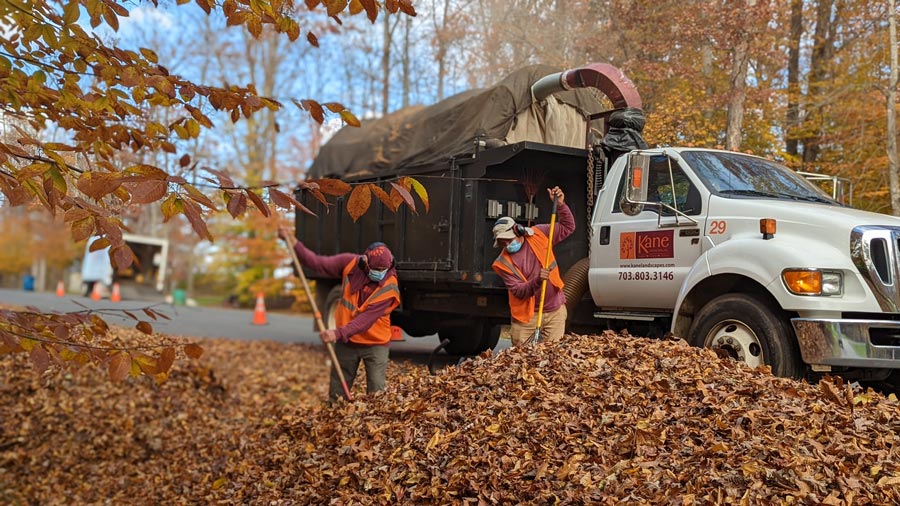A well-cut lawn looks great, but the real magic happens below the surface. Healthy turf depends on strong roots, balanced moisture, and steady growth. The 1/3 rule is a simple guideline that protects all three. When you follow it, you reduce stress on your grass, improve density, and keep your lawn greener through heat and drought. Here is how to put the rule to work in your yard with confidence.
What is the 1/3 rule in lawn care?
The 1/3 rule says you should never remove more than one third of the grass blade height in a single mowing. If your ideal mowing height is 3 inches, do not let the grass get taller than about 4.5 inches before you cut. Taking off only the top third preserves the plant’s food supply and reduces shock to the crown and roots.
Why it works:
- Grass blades are your lawn’s solar panels. Cutting too short strips away energy reserves and slows recovery.
- Taller blades shade the soil, which keeps temperatures lower and helps retain soil moisture.
- A moderate cut reduces the risk of scalping high spots, which invites weeds and disease.
The result is a lawn that grows steadily with thicker turf and fewer bare patches.
Set the right mowing height for your grass type
Start by choosing a healthy target height based on your turf species:
- Cool season grasses common in Northern Virginia, like tall fescue and Kentucky bluegrass, thrive at 3 to 4 inches through most of the growing season.
- In peak summer heat, raise the deck by a half inch. Extra blade height offers shade and helps roots withstand stress.
Once you pick a height, work the 1/3 rule backwards. For a 3.5 inch target, mow when the lawn reaches about 5.25 inches. A simple ruler check at a few spots can prevent accidental overcutting.
How often should you mow?
Mowing frequency depends on growth rate, which changes with temperature, rainfall, and fertilization. In spring and early fall your lawn grows fast, so you may mow every 4 to 7 days to stay within the 1/3 limit. In summer, growth slows and you may stretch to 7 to 14 days. During drought, mow less often and raise the deck. If the grass gets away from you after a rainy stretch, do not try to fix it in one pass. Reduce height gradually over two or three mowings spaced a few days apart.
What happens if you cut too much at once?
Taking off more than one third in a single mow causes:
- Root growth slowdown, which weakens drought tolerance.
- Browning and tip burn, especially during heat.
- More weeds, since stressed turf leaves openings for crabgrass and broadleaf invaders.
- Higher disease risk due to wounded, sun-exposed crowns.
If you accidentally cut too low, water lightly the next morning, skip fertilization for a week, and resume mowing at a higher setting until color and vigor return.
Sharp blades and proper mowing pattern
The 1/3 rule pairs best with clean cuts. Dull blades tear leaf tips, which turn brown and invite disease. Sharpen at least once per season, more often if you mow frequently or hit sticks and hidden stones. Alternate your mowing pattern each time to reduce soil compaction and ruts. Edge and trim after mowing for crisp lines that make any lawn look professionally maintained.
Leave the clippings on the lawn
Grasscycling supports the 1/3 rule by returning nutrients to the soil. When you remove only the top third, clippings are small and break down quickly. They do not create thatch. They contribute nitrogen, reduce the need for added fertilizer, and help the soil retain moisture. If clippings clump, mow again at a higher setting to disperse them or use a mulching blade.
Watering, fertilization, and the 1/3 rule
Consistent mowing works best with balanced water and nutrients:
- Water deeply and infrequently. Aim for 1 inch per week from rain and irrigation combined, delivered in one or two early morning sessions.
- Fertilize cool season turf in fall and lightly in spring. Avoid heavy summer feedings that spur excessive top growth when heat stress is highest.
- Aeration and overseeding in early fall improve root depth and turf density, which helps the lawn maintain the right height between mowings without thinning.
If you want a set-it-and-forget-it plan, professional landscape maintenance can align mowing, feeding, and watering to the 1/3 rule so the lawn stays healthy in every season.
The difference between landscaping and gardening
You will hear both terms when caring for your property, and they are related but not the same.
- Landscaping focuses on the overall design and function of your outdoor space. It includes site grading, drainage solutions, hardscapes like patios and walkways, lighting, water features, planting design, and long-term planning for growth and maintenance. A licensed or experienced designer or landscape architect looks at your property as a system and plans for beauty, durability, and sustainability.
- Gardening focuses on the care and cultivation of plants within that space. It includes planting, pruning, mulching, weeding, staking, and seasonal color changes. Gardening is the hands-on, routine care that keeps plants healthy and attractive day to day.
Think of landscaping as the blueprint and built framework, and gardening as the ongoing care within that framework. Both are essential if you want your lawn and plantings to thrive.
Simple checklist to implement the 1/3 rule
- Choose a target mowing height based on your grass type and season.
- Mow when the lawn is 1.5 times that target height.
- Keep mower blades sharp and adjust deck height accurately.
- Vary mowing patterns and avoid cutting wet grass to prevent clumping and ruts.
- Leave clippings to recycle nutrients.
- Support growth with smart watering, seasonal fertilization, and annual aeration.
When to call in help
If your lawn struggles with shade, compacted soil, drainage issues, or uneven grading, the 1/3 rule alone will not fix the root causes. Professional evaluation can correct underlying problems, so routine mowing delivers full results. Our team can tailor a program that blends mowing with soil improvement, irrigation calibration, and overseeding for thicker turf. Explore our comprehensive approach to landscape maintenance for a reliable, year-round plan that keeps your lawn at its best.
Summary
The 1/3 rule is a small habit with big impact. By never removing more than one third of the grass blade, you protect root systems, conserve moisture, and promote dense growth that resists weeds and disease. Pair the rule with sharp blades, consistent watering, and seasonal care, and your lawn will reward you with lasting color and resilience. If you want expert support, we are ready to help with planning, mowing, and proactive care that fits your property and schedule. Learn more about our landscape maintenance or schedule a consultation to get started.




